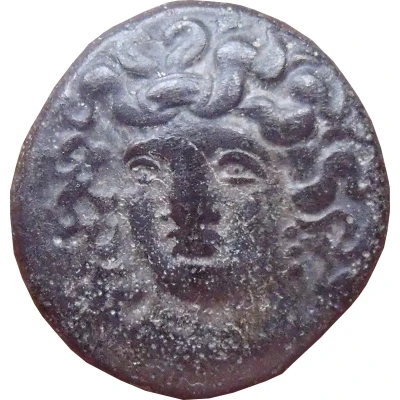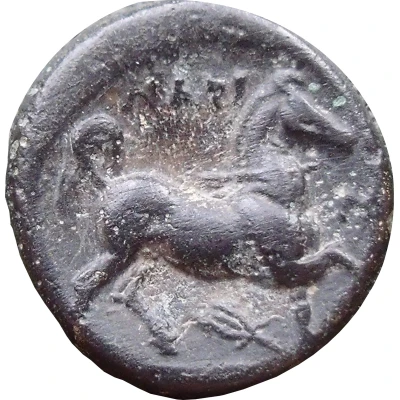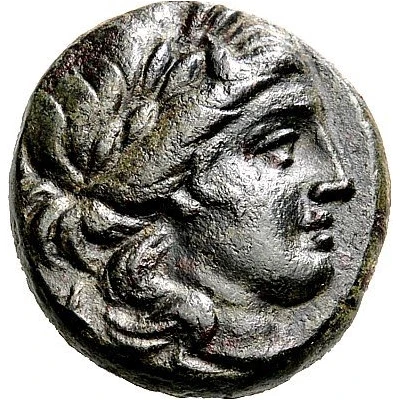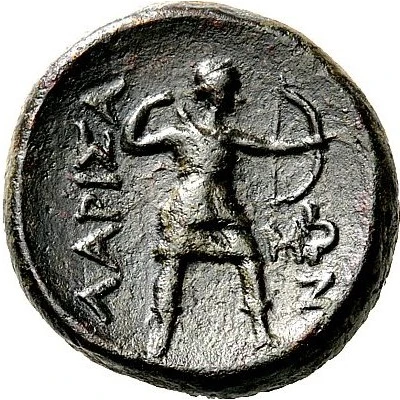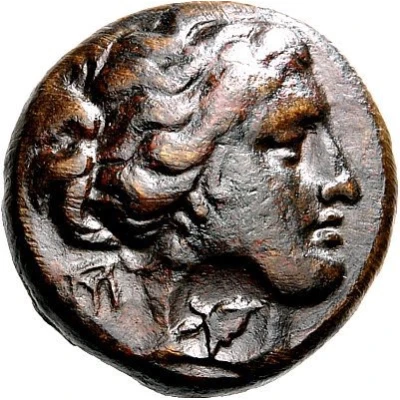
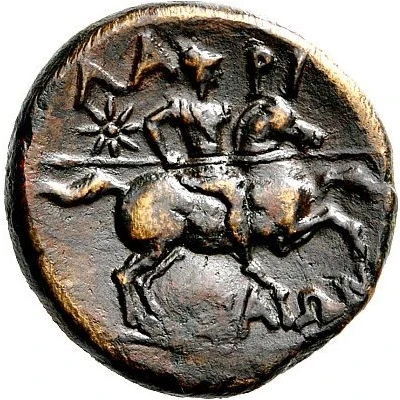

© Nomos AG
Tetrachalkon 200 BC - 100 BC
| Bronze | 8.33 g | 20.0 mm |
| Issuer | Larissa (Thessaly) |
|---|---|
| Type | Standard circulation coin |
| Years | 200 BC - 100 BC |
| Value | Tetrachalkon (1⁄12) |
| Currency | Drachm |
| Composition | Bronze |
| Weight | 8.33 g |
| Diameter | 20.0 mm |
| Shape | Round (irregular) |
| Technique | Countermarked, Hammered |
| Demonetized | Yes |
| Updated | 2024-10-10 |
| Numista | N#171105 |
|---|---|
| Rarity index | 97% |
Reverse
Armored horseman holding spear wearing spiked helmet galloping right
Script: Greek
Lettering: ΛΑΡΙ ΣΑΙΩΝ
Interesting fact
The Tetrachalkon coin was used in ancient Greece during the Hellenistic period, specifically in the city of Larissa in Thessaly. The coin's name "Tetrachalkon" comes from the Greek words "tetra," meaning four, and "chalkos," meaning copper, referring to the coin's value, which was equivalent to four copper coins. Despite its relatively low value, the Tetrachalkon coin was made of bronze, a more durable and valuable material than copper, indicating the importance of Larissa as a city and its trade networks.
